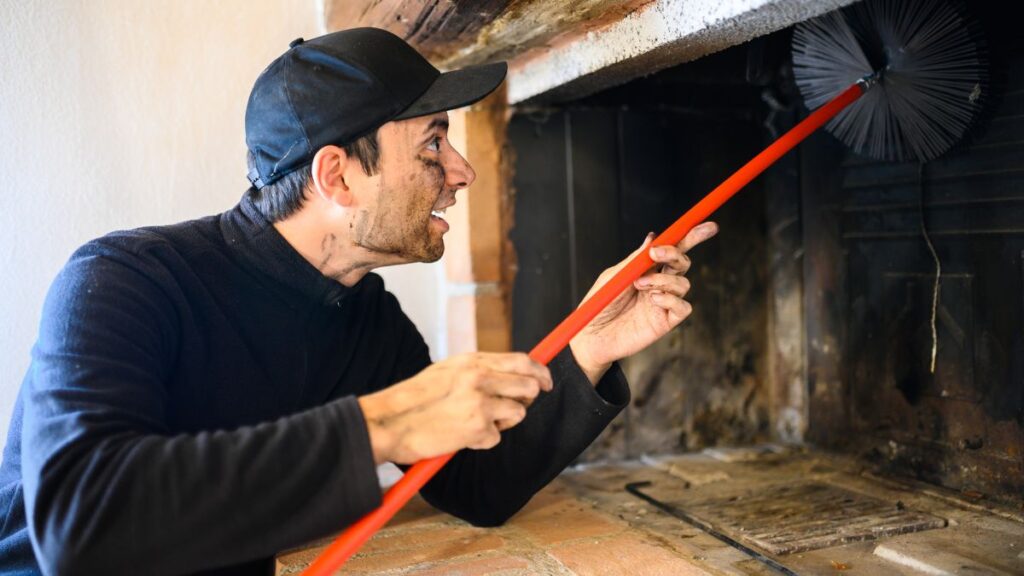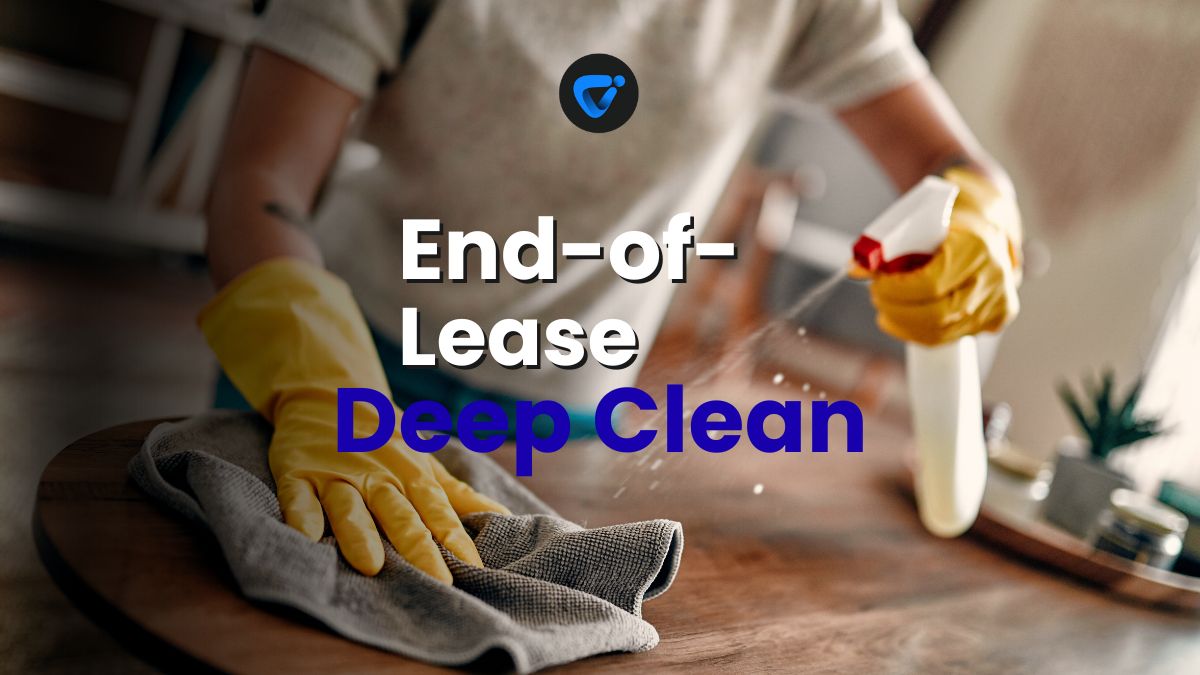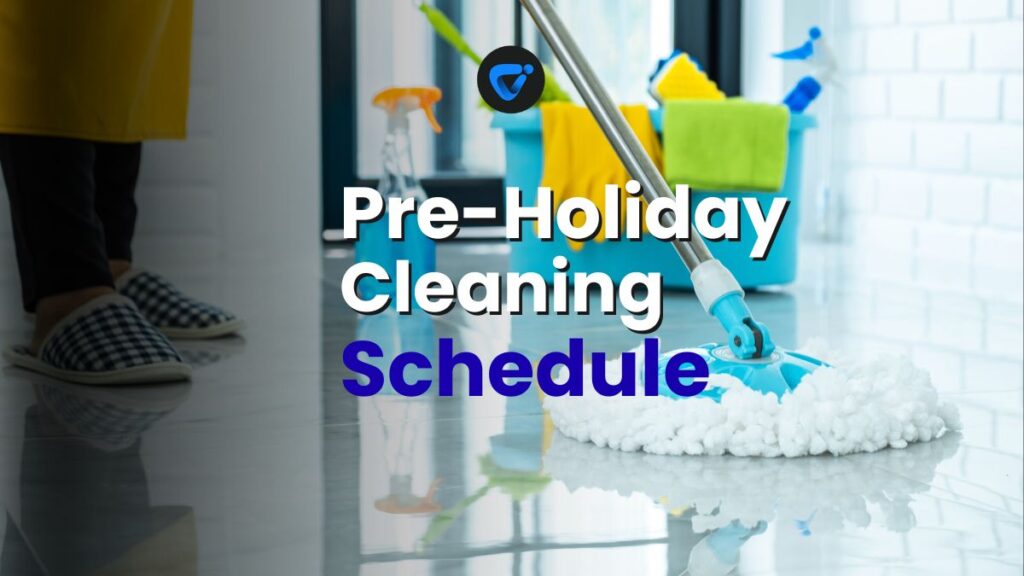
If lighting a fire makes your living room warmer and more inviting, chimney cleaning is one of those silent tasks that quietly protects this comfort. Every season brings fresh opportunities to forget what’s out of sight—soot, buildup, and the silent creep of risk.

Pre-Holiday Cleaning Schedule to Beat the Seasonal
Discover a practical holiday cleaning schedule with checklists, room-by-room tips, and realistic micro-habits for a stress-free, inviting home all season long.
Families rely on their fireplaces without thinking much about what’s going on inside the vents. Clean chimneys eliminate potential dangers, like stray embers or blocked airflow, ensuring every gathering stays cozy and safe.
This guide walks you through each step of effective annual chimney and vent cleaning. By exploring these methods and examples, you’ll confidently keep your heating systems clean, efficient, and reliable.
Annual Scheduling: Building a Sustainable Chimney Cleaning Habit
Scheduling chimney cleaning before each burning season delivers more consistent results and fewer surprises. Homeowners avoid last-minute scrambles and can handle any repairs without being left in the cold.
By marking a recurring calendar date—such as early autumn—you reinforce a routine that protects your home. Use your smartphone or a paper planner to block out a weekend specifically for chimney and vent maintenance.
Using a Visual Calendar for Reminders
Hang a physical calendar in your utility room, circling your chimney cleaning date in red. It becomes part of the seasonal prep routine, just like changing HVAC filters or restocking firewood.
A family member can initial the box as each task is completed, ensuring it’s not overlooked even during busy months. This method brings shared accountability and a sense of accomplishment.
Combine the cleaning reminder with related chores, such as sweeping ash from the hearth or checking smoke alarms, for bundled maintenance momentum each year.
Pairing Cleaning with Life Events
Some families tie chimney cleaning to an annual event—”We clean the chimney the weekend before Halloween every year.” This concrete tradition helps everyone remember, and creates a seasonal rhythm that’s hard to ignore.
Deliberately pairing the cleaning with putting away porch furniture or raking leaves builds a strong mental link. It also ensures you tackle all fall maintenance with one clear mindset.
This pattern pays off in winter, as heating season arrives with fresh confidence that your vents and chimney are ready for use.
| Cleaning Timing | Benefits | Typical Tasks | What To Do Next |
|---|---|---|---|
| Before first fire | Removes hazards | Soot scraping, visual inspection | Schedule annual chimney cleaning routinely |
| After high-use winter | Prevents buildup | Soot brushing, ash removal | Combine with spring cleaning tasks |
| During renovations | Avoids debris blockages | Vacuum flue, check vent covers | Add chimney cleaning to renovation checklist |
| Rental property turn | Ensures tenant safety | Detailed vent and chimney assessment | Document every cleaning for future tenants |
| Annual inspection | Finds repair issues early | Full interior check | Book a certified specialist if concerns arise |
Choosing the Right Tools: Efficient Gear for Safe and Thorough Chimney Cleaning
Having the best chimney cleaning tools at the ready makes each job quicker and safer, while also delivering a more thorough result. Picking well-built brushes, flexible rods, and PPE removes much of the guesswork.
Using the right size brush for your flue, gloves to protect your skin, and a reliable dust mask keeps you comfortable while handling dusty, grimy residue; this is especially true for vent cleaning, where soot and allergens accumulate.
Brushes Designed for Proper Coverage
Wire chimney brushes come in round and square shapes for a snug fit in both clay-lined and metal chimneys. A stiff-bristled brush scrapes away thick deposits without damaging the liner.
Attaching extension rods helps you reach deeper sections of the flue while standing securely at floor level. Scrub in short, controlled motions to dislodge creosote all along the chimney walls for an optimal clean.
If the brush gets stuck or can’t reach tight bends, switch to a flexible whip head. It contours to odd corners and gives more complete results across various venting systems.
- Choose a brush size that matches your chimney’s width to prevent scratches and missed spots. A snug fit scrapes edges properly, ensuring an even clean every time.
- Wear long, durable gloves to protect your hands from sharp soot shards and abrasive buildup lurking near the flue opening.
- Always keep a flashlight or headlamp nearby. Proper lighting exposes hidden creosote patches in hard-to-see sections, especially in older chimneys with less daylight.
- Use flexible extension rods to safely reach bends and joints, preventing injury from leaning into awkward positions or balancing on unstable surfaces.
- Secure a dust mask before you open the damper or start agitating the flue. Protect your lungs from airborne debris that escapes during the chimney cleaning process.
By adding these tools to your home maintenance kit, you can efficiently handle chimney and vent cleaning solo or with a helper’s support. Prioritizing safety means fewer mishaps and more consistent results.

Ultimate Spring Cleaning Checklist for Every Room
Find your ultimate spring cleaning checklist for every room. Transform entryways, kitchens, living areas, bedrooms, and more with room-specific tips, checklists, and acti
Gear Storage and Upkeep
After chimney cleaning sessions, wipe all brushes and rods with a damp rag, then air dry before storing. Doing this prolongs their life and keeps gear ready for whenever you’re set to clean next.
Store sharp objects—like scrapers—in a lidded container out of children’s reach. Wrap gloves and masks in a clean cover to prevent dust transfer into living spaces or your car.
- Designate a toolbox especially for cleaning equipment to prevent loss or misplacement during busy weekends.
- Write purchase dates directly on tool handles with permanent marker, giving you a timeline for upgrades or replacements.
- Replace dusty, bent, or worn brushes as soon as bristles begin to fray to prevent inefficient cleaning sessions.
- Keep a running list of tools used in each cleaning event, tracking what works best for your home and vent setup.
- Place supplies in sight next to your calendar once autumn rolls in, ensuring the chimney cleaning task never slips your mind again.
Organized tools streamline future cleaning days, and make it simple to pass along chimney cleaning traditions within your household for years to come.
Cleaning Process: Step-by-Step System for Effective Chimney and Vent Maintenance
Following a reliable sequence streamlines the chimney cleaning task. Every chimney and vent system gets complete attention when you know what to do, when to switch tools, and how to spot hazards along the way.
Prepping the Fireplace and Work Area
Lay a tarp in front of the hearth and move nearby furniture. This shields surfaces from soot and falling debris, containing the mess and speeding up final cleanup.
Clear out all leftover ashes with a metal bucket and fireplace shovel. Remove the grate and andirons, placing them outside on newspaper for scrubbing or inspection.
Insert a shop vacuum’s nozzle at the firebox entrance and briefly run it before brushing, minimizing airborne dust before you start more strenuous scraping inside the chimney flue.
Executing the Cleaning Sequence
Push a chimney brush attached to rods gently upward from the firebox toward the roof opening. Sweep in steady, twisting motions as you add rod segments to advance the brush further into the stack.
After hitting the flue crown, carefully reverse and withdraw the brush, dislodging soot on the way down. Alternate with upward and downward strokes for maximum residue removal.
For vent cleaning, detach vent covers and vacuum supply ducts before dusting. Use microfiber cloths or a small detail brush for vents clogged with powder-fine particles, restoring clear airflow to the entire system.
Recognizing Trouble Signs: When Your Chimney Needs Immediate Attention
Knowing the signals calling for chimney cleaning can prevent emergencies. Recognizable sights and smells alert you to blockage, structural decay, or past-due maintenance long before trouble strikes.
You might notice stubborn dark stains collecting around the fireplace, new drafts near the damper, or a persistent smoky smell. Treat these cues as a clear sign to inspect your chimney and vent system without delay.
Visual and Sensory Clues
Black streaks or tar-like drips oozing down the firebox bricks reveal accumulating creosote—it’s combustible and should be dealt with before further use. Ignoring these signs increases risk during every fire.
Bird nests or accumulated twigs at the top of the flue signal blockages restricting airflow. Wait to light another fire until these obstructions are cleared by chimney cleaning, whether DIY or by a professional sweep.
Strong, musty odors lingering in the room shorty after a fire generally mean deposits are smoldering inside the chimney’s walls, demanding immediate attention and a full sweep.
Draft and Performance Changes
If smoke reverses direction, entering rather than exiting the room, your vent system is blocked. Inspect for disconnected vent joints, stuck dampers, or fallen debris; schedule immediate chimney cleaning if you can’t spot or remove the source.
A slow-burning fire may signal a dirty chimney. Too little oxygen intake, caused by clogs or thick soot, drastically reduces your fireplace’s efficiency. Address this for a noticeable improvement in warmth and fuel use.
Unexpected pops, snaps, or burning odors warrant a break in use. Upon the first sound of these warnings, write down the symptoms and arrange a thorough inspection as soon as possible.
Professional Cleaning: Deciding When to Hire a Chimney Sweep Versus DIY
Weighing the choice to call in experts versus handling chimney cleaning yourself depends on what you see, how comfortable you are with ladders, and what your local guidelines require.
Annual professional visits uncover problems like cracked liners or shifting masonry that aren’t visible from the ground. Certified sweeps bring specialized equipment, experience removing deep creosote, and provide detailed inspection reports for peace of mind.
Situations Calling for a Pro
If soot falls out in chunks or you discover nesting animals at the flue, schedule a professional chimney cleaning just as you’d book a plumber for a burst pipe—fast and decisive.
Rental properties or homes with especially tall or winding vent systems need a certified sweep’s reach and know-how, ensuring every inch is cleared safely and in line with code.
Real estate transactions generally require evidence of recent chimney cleaning. Book this service a few weeks before closing to avoid delays in paperwork or legal obligations.
When Do-It-Yourself Works Well
For one-story homes or accessible brick chimneys, a patient homeowner with the right brush and rods can do the job safely. Keep feet planted, use all recommended PPE, and never force tools if resistance is met.
If you spot minor soot with no wildlife or odd odors, a thorough pass with a proper brush is usually enough. Always double-check your work with a flashlight and manual mirror to ensure the chimney is fully clear.
An annual photo log provides a visual record. After each cleaning session, snap before-and-after shots for future benchmarks and to confirm ongoing progress with your routine.
Vent Cleaning Extras: Air Quality Checks and Long-Term Home Comfort
Chimney and vent cleaning goes beyond fireplace safety—it improves household air quality. Removing dust, mold, or allergen buildup in vents keeps your family breathing easier, especially in tightly sealed winter homes.
Airflow improves after a full cleaning, making heating systems more effective and helping every room stay evenly comfortable. Aim to clean or replace return air vent filters each time you handle chimney maintenance.
Pairing Vent and Chimney Tasks
If you’re already wearing gloves and a mask, add duct cleaning to your routine. Pull off vent covers and vacuum visible debris, repeating this check seasonally alongside chimney cleaning for joint efficiency gains.
Move furniture from under floor vents and run a damp cloth over exposed edges after vacuuming. This process clears paths for warmed air and prevents dust from resettling after you finish cleaning.
Upgrade to higher-grade pleated filters if you notice more sneezing or stuffy rooms—most standard vent slots accept these simple swaps within minutes, delivering major air quality benefits if changed regularly.
Checklist for Hassle-Free Annual Maintenance
Final outcomes matter when it comes to chimney and vent cleaning. Having a clear, action-based checklist preserves your investment and eliminates return trips to the hardware store, so every step builds on the last for a truly secure home.
- Mark your calendar at least two weeks ahead of your preferred cleaning date. This ensures you have time to gather supplies and notify family to plan around the maintenance.
- Pile all necessary brushes, rods, gloves, tarps, and masks in a visible bin the night before your scheduled task. This creates momentum and reduces setup hassle when cleaning day arrives.
- Inspect the chimney flue and firebox after every high-use season, not just annually. Early signs of buildup can appear faster after heavy winter use, giving you a head start on vital chimney cleaning chores.
- Check vent registers and replace all air filters every time you clean the chimney. Combining tasks saves time and multiplies the comfort and air quality benefits.
- Maintain a notebook or digital record of each cleaning session, jotting down what tools worked, what problems you discovered, and any professional referrals made.
Regular tracking prevents step overlaps and builds a lasting foundation for safe home heating practices throughout the year.
Frequently Asked Questions
Schedule professional chimney cleaning at least once a year, ideally before the heating season. Increase frequency for frequent fireplace use or after heavy storms that introduce debris into your vents. Homeowners with wood stoves should inspect mid-season too.
When you notice persistent smoke reversal, foul or musty odors, or increased allergies after fires, inspect the vents immediately. Soot piles or bird debris require prompt action. Ignoring these cues risks fire and heating efficiency.
For straightforward single-flue chimneys and minor buildups, careful DIY cleaning can suffice. Deep creosote layers, animal blockages, or complex vent routes are best handled by certified sweeps with specialized equipment for safety and thorough results.
Wear dust masks, long gloves, old clothes, and safety goggles. Chimney cleaning exposes you to irritants and sharp particulates—protective gear prevents skin and lung contact, ensuring safe and mess-free finishing for each task.
Absolutely. Both clear out buildup that blocks airflow, allowing heating systems to function properly and reducing allergens or lingering odors. Cleaning both in tandem amplifies comfort and safety, making it a complete seasonal routine for every household.

End-of-Lease Deep Clean for a Full Deposit Return
Get your full deposit back with a proper end-of-lease deep clean. Follow our quick guide and move out stress-free!


